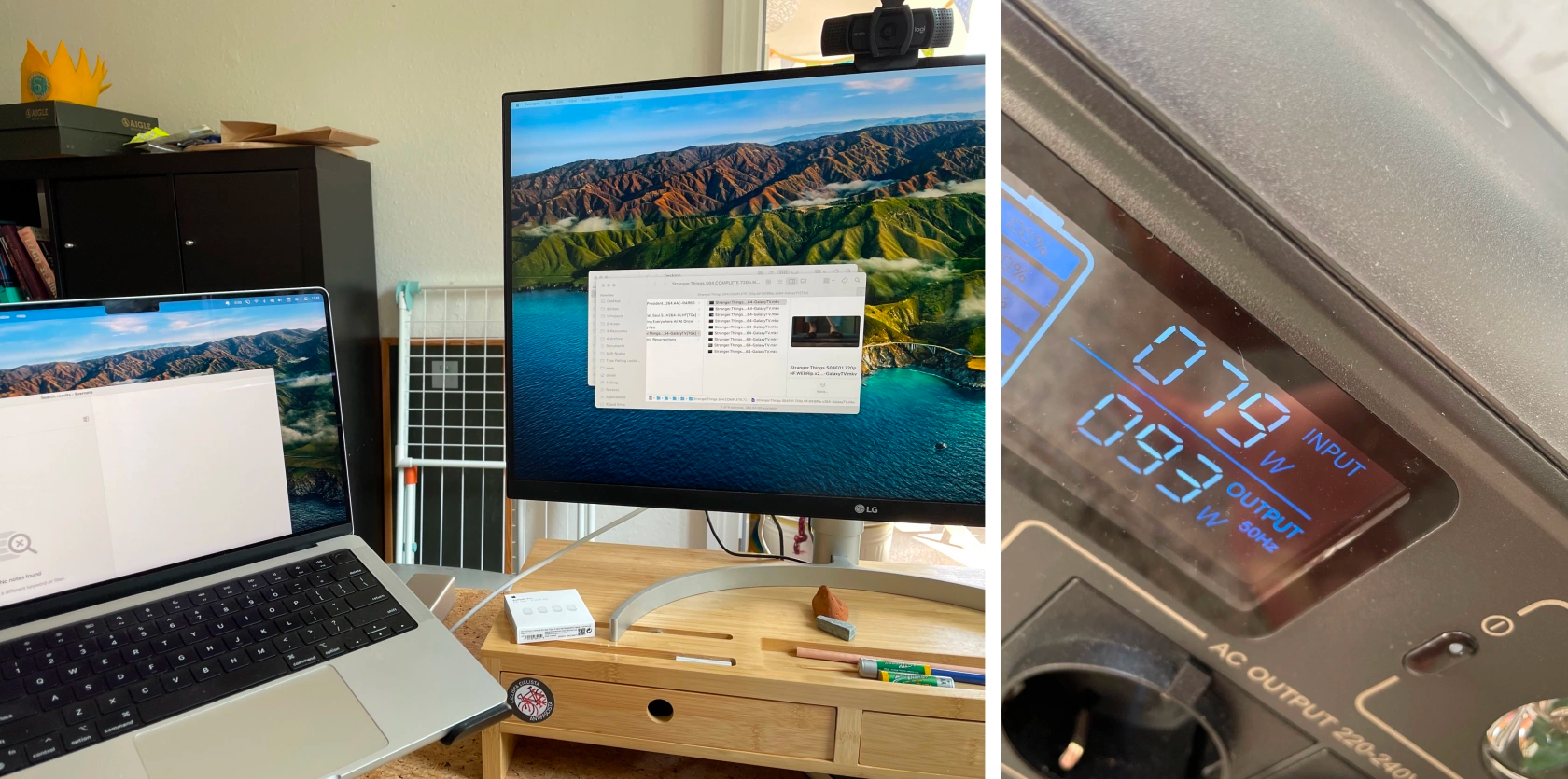Earth is melting, energy prices are surging. Camping vacation is around the corner. I’m working 100% remote. Almost every day is sunny.
Getting a solar panel and a power station seems like a good idea these days. I have absolutely no idea about either photovoltaics, batteries or electricity in general, beyond plugging plugs into outlets. With no ambition to get into electric tinkering, I looked into ready-to-use solar panels that sell in a bundle with a suitable power station, that can power my MacBook, a little camping fridge and, when at home, an external display.

After some research, I had two products on the shortlist:
Both had a lot of genuine-sounding positive reviews, but the Anker solar panels seemed to have a problem with rain (I don’t remember exactly if this was an official warning or just some random person), whereas the Bluetti appeared to be okay with a few sprinkles of water. Besides that, the EB70 can store roundabout 200Wh (Watt hours) more energy than the Anker, and its maximum output is 1000W, whereas the Anker can deliver only 500W.
Both power stations operate with lithium iron phosphate batteries, which are way less likely to ignite or explode than lithium-ion batteries. With about 5000 charging cycles, their lifespan is also way longer than li-ion’s. That’s definitely something to consider when shopping for cheaper alternatives.
With an equal cost of about €1000 for either set, I opted for the Bluetti due to its greater capacity and higher output, and the slightly higher nominal yield of the solar panel (120W vs 100W). This (German) review also sounded solid, although the domain name would suggest otherwise 🙃.
By the way, It seems the Chinese brand Bluetti is being sold as Bluetti PowerOak in Germany. Same device, different label, don’t be confused by that.
While these findings might be obvious to people who are into the topic, they were new to me and may be interesting to people like me. I haven’t used it yet while traveling off the grid, and it’s only been a couple of days, so as always, your mileage may vary.
The power station really didn’t make compromises on ports to charge devices, as well as those to charge the power station itself:
Input
Output

When the panel is fully exposed to the sun, it delivers 60-90W into the power station
Unfortunately, I can’t get full sunlight for my entire workday. At least while working with two screens and not permanently moving the solar panel to a better place, I watched the battery not being able to sustain charged over the course of a week. But I’ve also tried a couple of other tests, like running a larger TV from it, so it’s not really representative.
I’m really curious to see how this works out when we’re out camping, with a lot less need for work stuff, but a little fridge (50-90W) running.
 Ravennaschlucht from the train
Ravennaschlucht from the train
 Install & Configure Laravel Horizon with Statamic and Run it on Forge
Install & Configure Laravel Horizon with Statamic and Run it on Forge